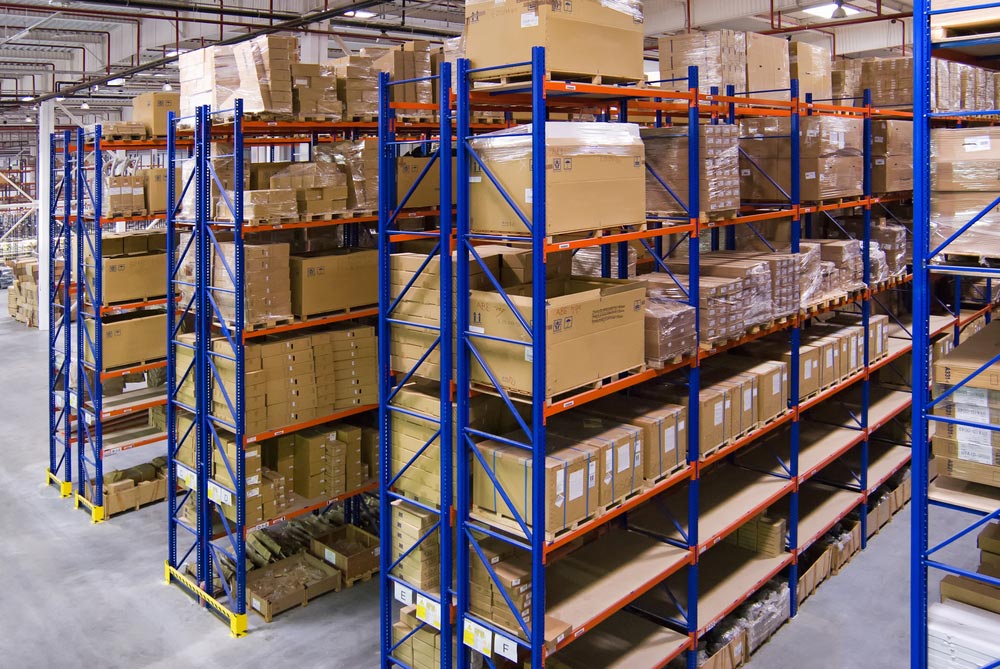Preparing your business inventory for long-term storage requires careful planning and strategic packing. With the right preparation, you can ensure that items remain in top condition, accessible, and optimally organised, whether it’s office supplies, equipment, or seasonal products. In this blog post, we’ll provide a step-by-step approach to preparing and packing items for long-term commercial storage, helping you maximise space, protect assets, and maintain order.

Assess What Needs Storing
Begin by evaluating which items truly require long-term storage. Storing unnecessary items can lead to wasted space and increased costs, so carefully inventory and decide what is essential. Ask yourself these questions:
- Is this item necessary for daily operations, or can it be stored?
- How frequently will I need to access this item?
- Is storing, selling, or disposing of this item more cost-effective?
This initial assessment will streamline the process, ensuring that only valuable or occasionally needed items are stored. It will also help you save on storage costs by avoiding unnecessary items that can be sold or discarded.
Choose the Right Storage Solutions
The next step is to select storage solutions that best suit your inventory needs. Different items benefit from different types of storage, so carefully consider your options based on the nature of your inventory. Some ideal storage options include:
- Shelving & Racks: Perfect for organising small, lightweight items like office supplies or packaged products.
- Pallet Storage: Ideal for large or bulky items that need to be stable and accessible.
- Climate-Controlled Units: Essential for delicate items such as electronics, sensitive documents, or perishable goods that could be damaged by temperature fluctuations or humidity.
Assess your inventory and choose the appropriate storage solutions to optimise space and preserve item quality.
Organise & Label Items
Organising and labelling items is key to keeping your storage unit efficient and accessible. This step ensures you’ll always know where to find each item, saving time when it comes to retrieval. Here’s how to keep everything organised:
- Categorise Items by Type: Group items based on their function or category, such as electronics, furniture, and office supplies. This will make it easier to retrieve items without rummaging through all storage.
- Label Boxes Clearly: Use waterproof markers and large labels on each box. Include item details, storage date, and specific categories if necessary.
- Create a Storage Map: Map out where items are located within the storage unit. Place a copy in an accessible area and keep another copy in your records for quick reference.
By organising and labelling, you make tracking and accessing your items much easier, even if they remain in storage for months or years.
Use Quality Packing Materials
High-quality packing materials are crucial for protecting inventory, especially over extended periods. Choosing durable materials will reduce the risk of damage and preserve the condition of your items. Key packing materials to consider include:
- Heavy-Duty Boxes: Invest in sturdy, stackable boxes to prevent crushing or bending, especially if you’re storing for long periods.
- Bubble Wrap & Packing Paper: These provide extra cushioning for fragile items, ensuring they remain secure and intact.
- Plastic Wrap & Dust Covers: Wrapping items protects them from dust, dirt, and moisture that could accumulate in storage.
Disassemble Large Items
Large items like furniture or equipment can take up significant space, so consider disassembling these pieces before storage. Reducing the bulk of large items will create more space in your storage unit. Here’s a simple breakdown of how to do it effectively:
- Take Apart Shelving, Desks, & Chairs: Disassembling furniture saves space and minimises the risk of damage. Be sure to label each piece for easy reassembly.
- Wrap & Label Parts Separately: Keep smaller parts like screws, bolts, and other hardware in clearly labelled bags.
- Bundle Parts Together: Securely wrap the disassembled parts together using protective padding or plastic wrap, making it easy to retrieve and reassemble when needed.
Disassembling bulky items optimises storage and ensures they are well protected against damage or deformation.
Protect Electronics & Sensitive Equipment
If you’re storing electronics or sensitive equipment, take extra precautions to protect these items from damage. Electronic items are particularly vulnerable to dust, temperature changes, and pressure, so preparing them accordingly is essential. Here are some tips for safeguarding electronics:
- Use Original Packaging: The original boxes are often the best fit for electronics, providing customised padding and protection.
- Cover Screens & Delicate Parts: Wrap screens with soft padding or bubble wrap to prevent scratches and dust accumulation.
- Avoid Stacking Heavy Items on Electronics: Store electronics at the top of stacks or separately to avoid pressure and damage to screens and components.
Taking these steps helps to ensure that your electronics remain functional and undamaged during long-term storage.
Keep an Updated Inventory List
Maintaining an inventory list of all stored items is fundamental to successful storage management. This list helps you track what’s in storage and is especially valuable for businesses that frequently access or add to their storage. Your inventory list should include:
- Detailed Descriptions: Note each item’s name, category, and condition.
- Storage Date & Expected Retrieval Date: This helps track how long items have been in storage and identify items that may need access soon.
- Item Value: Keep track of each item’s value, especially for insurance and inventory management.
An up-to-date inventory list allows you to manage your stored items effectively and avoid misplacing or forgetting items in storage.
Consider Insurance for Added Protection
Long-term storage always carries some risk, so it’s wise to consider insurance coverage. When considering insurance options, keep the following in mind:
- Select Appropriate Coverage: Choose a policy that covers potential risks such as natural disasters, theft, or damage.
- Inventory Valuation: Ensure that your insurance policy accurately reflects the current value of your items in storage.
- Consult with Your Storage Provider: Many storage providers offer insurance options or partnerships with insurers to cover items in their facilities.
Rely on Us for Long-Term Storage Solutions in Port Macquarie
Preparing inventory for long-term storage is crucial to maintaining its quality and accessibility. At Easy Choice Removals and General Freight, we provide secure, long-term storage solutions to keep your business inventory safe and organised. With options for collection, various container sizes, and continuous video surveillance, your items are protected and accessible when needed. Our team ensures that your assets remain in excellent condition for extended storage periods. Reach out to our removalist in Port Macquarie, NSW, today to learn more!







